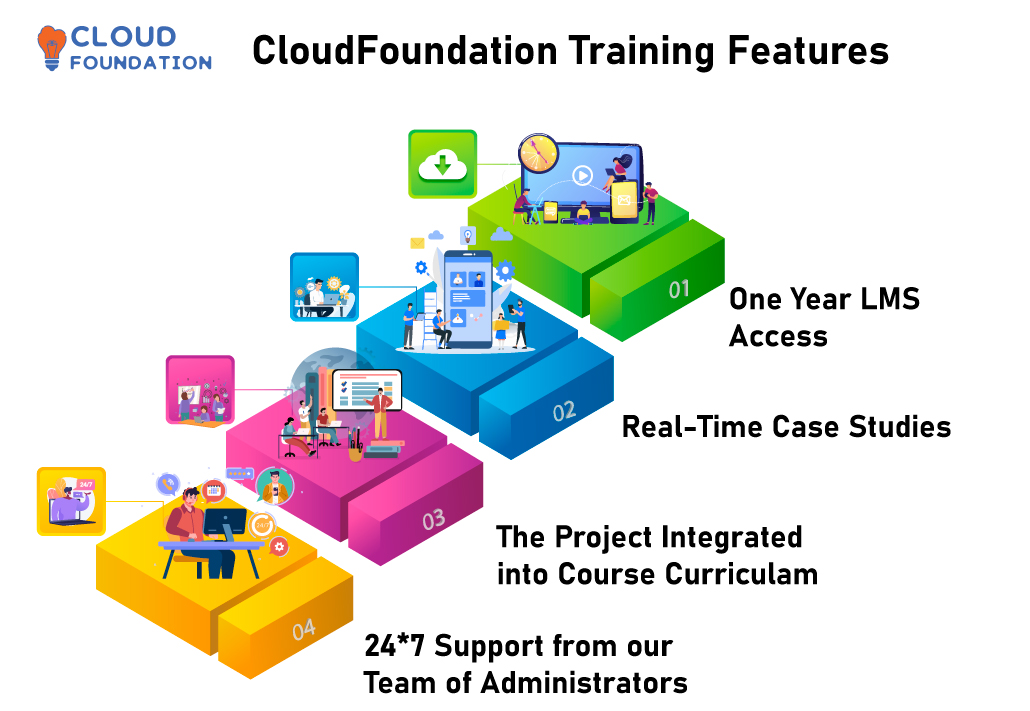Microsoft Azure AI-100 Training – The only Course you need
⏰26 hours | ▶️ 23 Videos | 📣 9152 Participants | 🎓 3819 Reviews | 4.9 ⭐⭐⭐⭐⭐
Choose a Plan that Works for You
Self Paced
- Advanced sessions
- Interview Q&A
- Free study Materials
- Premium Technical support
Instructor Led Live Training
- Live Instructor
- Advanced sessions
- Interview Q&A
- Premium Technical Support
Corporate Training
- Live Instructor
- Advanced sessions
- Interview Q&A
- Premium Technical Support
Upcoming Batches PST
Weekday
| Nov 06(1 HR A DAY) |
| 06:00 PM PST |
| Enroll Now → |
Weekday
| Nov 28(1 HR A DAY) |
| 06:30 AM IST |
| Enroll Now → |
Weekday
| Nov 22(1 HR A DAY) |
| 07:00 PM PST |
| Enroll Now → |
Upcoming Batches IST
Weekday
| Nov 07(1 HR A DAY) |
| 06:30 AM IST |
| Enroll Now → |
Weekday
| Nov 28(1 HR A DAY) |
| 06:30 PM IST |
| Enroll Now → |
Weekend
| Nov 23(1 HR A DAY) |
| 07:30 AM IST |
| Enroll Now → |
Course Description
Microsoft Azure AI 100 training designates conversational AI, deep learning, data mining, and Microsoft AI solutions.
Enroll andLearnto design and implement Azure AI solutions, performance requirements, and app building using AI in our courses.
Avail of our online classes with complete support and guidance from our tech team and clear your queries on the tech.
We cover all the required perceptions in our online courses with hands-on experiments with guidance under our expert trainers
Join and exercise for the exam and achieve your dream job by completing the AI 100 certification.

Recommend Azure Cognitive Services APIs to meet business requirements
- select the processing architecture for a solution
- select the appropriate data processing technologies
- select the appropriate AI models and services
- identify components and technologies required to connect service endpoints
- identify automation requirements
Map security requirements to tools, technologies, and processes
- identify processes and regulations needed to conform with data privacy, protection, and
- regulatory requirements
- identify which users and groups have access to information and interfaces
- identify appropriate tools for a solution
- identify auditing requirements
Select the software, services, and storage required to support a solution
- identify appropriate services and tools for a solution
- identify integration points with other Microsoft services
- identify storage required to store logging, bot state data, and Azure Cognitive Services output
Design AI solutions
Design solutions that include one or more pipelines
- define an AI application workflow process
- design a strategy for ingest and egress data
- design the integration point between multiple workflows and pipelines
- design pipelines that use AI apps
- design pipelines that call Azure Machine Learning models
- select an AI solution that meet cost constraints
Design solutions that use Cognitive Services
- design solutions that use vision, speech, language, knowledge, search, and anomaly
- detection APIs
Design solutions that implement the Microsoft Bot Framework
- integrate bots and AI solutions
- design bot services that use Language Understanding (LUIS)
- design bots that integrate with channels
- integrate bots with Azure app services and Azure Application Insights
Design the compute infrastructure to support a solution
- identify whether to create a GPU, FPGA, or CPU-based solution
- identify whether to use a cloud-based, on-premises, or hybrid compute infrastructure
- select a compute solution that meets cost constraints
Design for data governance, compliance, integrity, and security
- define how users and applications will authenticate to AI services
- design a content moderation strategy for data usage within an AI solution
- ensure that data adheres to compliance requirements defined by your organization
- ensure appropriate governance of data
- design strategies to ensure that the solution meets data privacy regulations and industry standards
Implement and monitor AI solutions
-
Implement an AI workflow
- develop AI pipelines
- manage the flow of data through the solution components
- implement data logging processes
- define and construct interfaces for custom AI services
- create solution endpoints
- develop streaming solutions
Integrate AI services and solution components
- configure prerequisite components and input datasets to allow the consumption of Azure Cognitive Services APIs
- configure integration with Azure Cognitive Services
- configure prerequisite components to allow connectivity to the Microsoft Bot Framework
- implement Azure Cognitive Search in a solution
Monitor and evaluate the AI environment
- identify the differences between KPIs, reported metrics, and root causes of thedifferences
- identify the differences between expected and actual workflow throughput
- maintain an AI solution for continuous improvement
- monitor AI components for availability
- recommend changes to an AI solution based on performance data
Analyze solution requirements
Recommend Azure Cognitive Services APIs to meet business requirements
- select the processing architecture for a solution
- select the appropriate data processing technologies
- select the appropriate AI models and services
- identify components and technologies required to connect service endpoints
- identify automation requirements
Map security requirements to tools, technologies, and processes
- identify processes and regulations needed to conform with data privacy, protection, and regulatory requirements
- identify which users and groups have access to information and interfaces
- identify appropriate tools for a solution
- identify auditing requirements
Select the software, services, and storage required to support a solution
- identify appropriate services and tools for a solution
- identify integration points with other Microsoft services
- identify storage required to store logging, bot state data, and Azure Cognitive Services output
Design AI solutions
-
Design solutions that include one or more pipelines
- define an AI application workflow process
- design a strategy for ingest and egress data
- design the integration point between multiple workflows and pipelines
- design pipelines that use AI apps
- design pipelines that call Azure Machine Learning models
- select an AI solution that meet cost constraints
Design solutions that use Cognitive Services
- design solutions that use vision, speech, language, knowledge, search, and anomaly detection APIs
Design solutions that implement the Microsoft Bot Framework
- integrate bots and AI solutions
- design bot services that use Language Understanding (LUIS)
- design bots that integrate with channels
- integrate bots with Azure app services and Azure Application Insights
Design the compute infrastructure to support a solution
- identify whether to create a GPU, FPGA, or CPU-based solution
- identify whether to use a cloud-based, on-premises, or hybrid compute infrastructure
- select a compute solution that meets cost constraints
Design for data governance, compliance, integrity, and security
- define how users and applications will authenticate to AI services
- design a content moderation strategy for data usage within an AI solution
- ensure that data adheres to compliance requirements defined by your organization
- ensure appropriate governance of data
- design strategies to ensure that the solution meets data privacy regulations and industry standards
Implement and monitor AI solutions
-
Implement an AI workflow
- develop AI pipelines
- manage the flow of data through the solution components
- implement data logging processes
- define and construct interfaces for custom AI services
- create solution endpoints
- develop streaming solutions
Integrate AI services and solution components
- configure prerequisite components and input datasets to allow the consumption of
- Azure Cognitive Services APIs
- configure integration with Azure Cognitive Services
- configure prerequisite components to allow connectivity to the Microsoft Bot Framework
- implement Azure Search in a solution
Monitor and evaluate the AI environment
- identify the differences between KPIs, reported metrics, and root causes of the differences
- identify the differences between expected and actual workflow throughput
- maintain an AI solution for continuous improvement
- monitor AI components for availability
- recommend changes to an AI solution based on performance data
FAQ’s
❓ Do you offer any discount/offer?
✅ Yes, offers keep changing from time to time. You can chat with us or call our training coordinator for more details.
❓ Is there any demo video which I can watch before enrolling to the course?
✅ Yes, we have provided a Demo video section on each course page so that you can get a glimpse into the course you want to enroll.
❓ How soon after signing up would I get access to the learning content?
✅ Yes, we will provide access to all the learning materials after the complete payment for the course.
Suggested Courses




Blue Prism Training
⭐⭐⭐⭐⭐
😃 320 Learners




Robotic Process Automation (RPA) Training
⭐⭐⭐⭐⭐
😃 331 Learners




OpenSpan Training
⭐⭐⭐⭐⭐
😃 30 Learners




Automation Anywhere
⭐⭐⭐⭐⭐
😃 112 Learners
A few of our students
















Contact Us